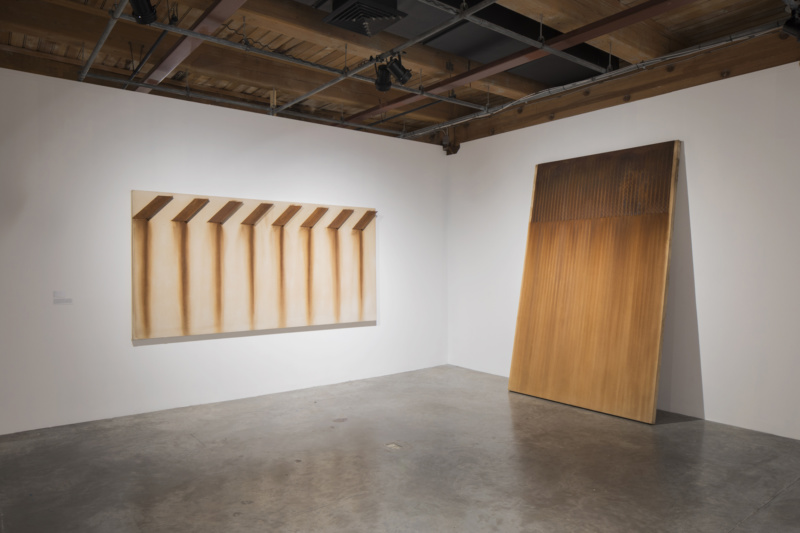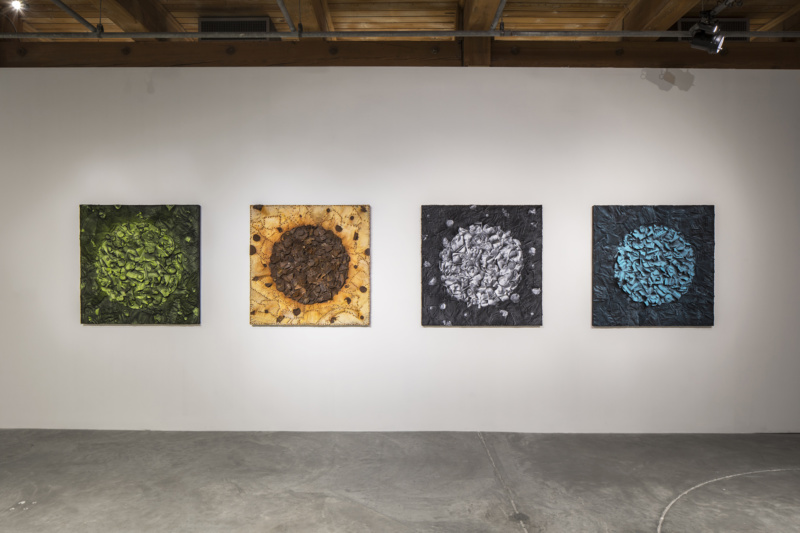
There are few US cities more familiar with migration, environmental catastrophe, industrial development and its postindustrial collapse than New Orleans. William Monaghan, born in the Crescent City, has consistently brought the materials of industry into his hybrid sculptural-painterly reliefs. His exhibition “I–Object,” on view through February 10 at the Contemporary Art Center of New Orleans, brings together two eras of his practice separated by forty years. Using the historical materials of labor, Monaghan elegizes the hopes and failures of the modern manufacturing era.

Growing up in New Orleans, Monaghan was fascinated by the operations at Reily Coffee Company, where his father worked. After finishing his studies at Yale and Harvard he landed a job working with the radical architect Buckminster Fuller, creator of the geodesic dome. Alongside a developing architectural practice, Monaghan created art in dialogue with the process-based movements of Minimalism and Postminimalism. In the mid-1970s he attached steel plates to canvas or wood panel and left them outdoors to accumulate painterly traces of rust. Like Robert Smithson’s nonsites, which gave ecological material new agency when placed in the gallery, these early series had a melancholic air. Andrea Andersson, CAC New Orleans’s chief curator, explains, “Willy’s work from the 1970s were harbingers, the first notes of recognition that the modern moment was made of ruins. But no one was listening.”

Monaghan showed many of these canvases in his first museum exhibition at the ICA Boston in 1975. Three decades later, he came back to New Orleans under emergency conditions during Hurricane Katrina. He describes “crouching under the screaming blades of rescue helicopters, wading through floodwaters and debris, surrounded by shattered buildings, losing my family home, tearing down others.” With his daughter Tess, Monaghan started the nonprofit Build Now, which has constructed built 130 homes to date and provided shelter to over 500 people in the city. “The battle to rebuild houses post-Katrina encompassed a disorienting frantic drama that now lives in my art,” he says.
The CAC show gathers works from the 1970s alongside those he has made since 2015. His recent compositions combine heaps of industrial scraps and textiles on large panels. He transforms these materials with airbrushed painterly effects to suggest flatness or alternative lighting effects. He also creates replicas of found materials at different scales, crimping pieces of metal to resemble found objects. Andersson explains, “This exhibition, formally and historically, is about displacement. That loss and estrangement is registered in the material specificities and chemistries of objects. As such, it is one-part lamentation. It is also work that sounds an alarm—one about conditions of life, labor, and waste.”










 in your life?
in your life?

